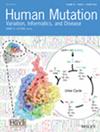Prediction of Immunotherapy Response and Prognostic Outcomes for Patients With Ovarian Cancer Using PANoptosis-Related Genes
Abstract
Background
Ovarian cancer (OC) is a lethal malignancy often diagnosed at a late stage with frequent recurrence and immunotherapy resistance. PANoptosis is a novel programmed cell death regulating tumors and immunity. We constructed a prognostic model based on PANoptosis-related genes (PRGs) and evaluated its value for predicting immunotherapy response and survival in OC.
Methods
PRGs linked to OC prognosis were identified from public databases, followed by using the STRING database to develop a protein–protein interaction (PPI) network. The LASSO and multivariate Cox regression analyses were used to construct a risk model, and its predictive value was verified by survival analysis, receiver operator characteristic (ROC) curve, and nomogram. Next, we analyzed the immune microenvironment by combining CIBERSORT, MCP-counter, and ssGSEA algorithms and assessed the response of patients in different risk groups to immunotherapy using TIDE with immune phenotype score (IPS) methods. GSEA was performed to evaluate the activation status of biological pathways between patients in different risk groups. Finally, we verified the expression and potential biological functions of the key genes using quantitative reverse transcription-PCR (qRT-PCR), CCK-8, scratch, and transwell assays.
Results
A PANoptosis-related risk model for OC was constructed based on eight genes (PIK3CG, CAMK2A, CD38, NFKB1, PSMA4, PSMA8, PSMB1, and STAT4). The model could accurately evaluate the prognostic outcomes for OC patients, showing a high stability across different datasets. High-risk patients had lower immune cell infiltration, elevated TIDE, and reduced IPS, which suggested weaker immunotherapy responsiveness and therefore a worse prognosis. In addition, pathway analysis showed that the high-risk group was mainly enriched in tumor progression–related pathways. In vitro, PIK3CG, CAMK2A, NFKB1, PSMA4, and PSMB1 were upregulated in OC cell lines, and knockdown of PIK3CG notably suppressed the proliferative, migratory, and invasive capabilities of OC cells.
Conclusion
The PRG model established in this study may contribute to the assessment of immunotherapeutic response and prognosis for OC patients.


 求助内容:
求助内容: 应助结果提醒方式:
应助结果提醒方式:


